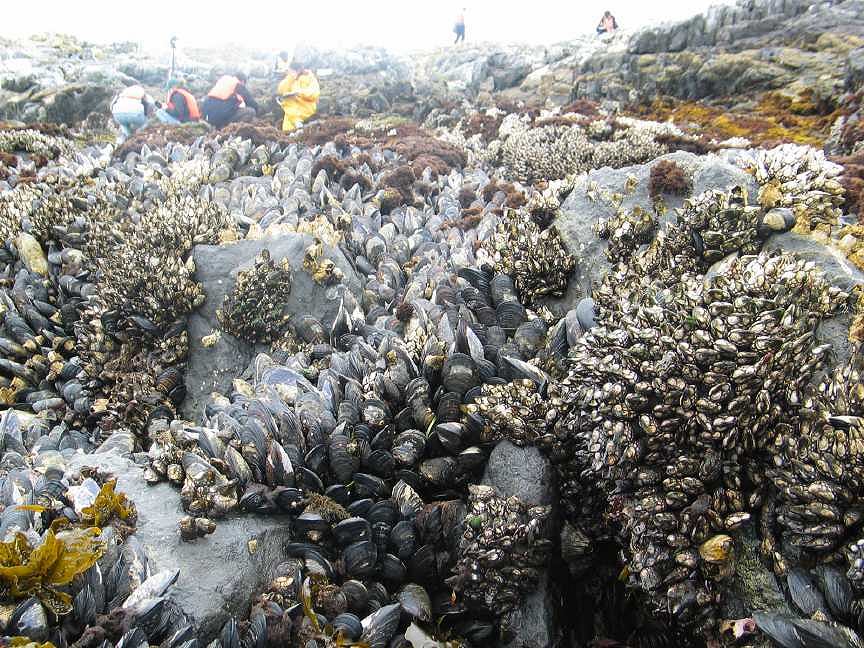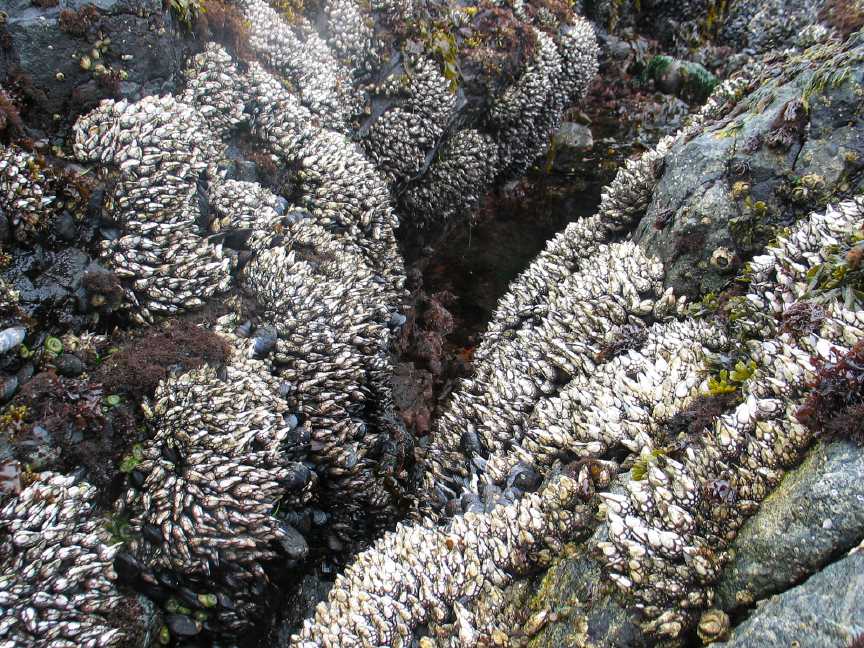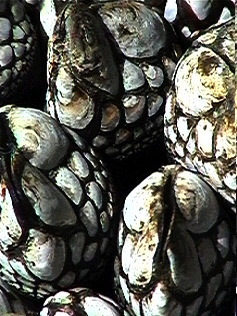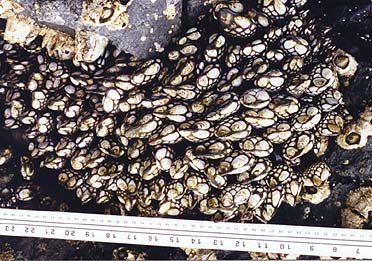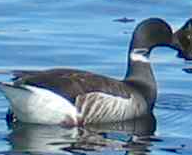On a field trip to Race Rocks with the Biology class in the spring 2003, we took some time to observe and video the surge channel out on the south-west tip of Great Race Rock. It was a calm day which had been preceded by a few days with storms out in the Pacific Ocean. The energy imparted to the water column was just now reaching Great Race and the water was breaking on the west shore. The effect of “Surge” as an abiotic factor is not often considered in affecting the intertidal zonation of organisms on rocky coastlines in marine biological research. See this file on this abiotic factor.
It is our firm belief that here, the level up the shoreline in the intertidal zone where many invertebrates and algae can survive is elevated. These intertidal organisms are able to keep moistened longer, ambient temperatures are depressed from evaporation and and they even have longer availability to food resources being carried in the surging water. This is most obvious with the Goose Neck barnacle population and the intertidal anemone distribution along this shore. Additionally the tidepools up the channel are flooded more frequently, resulting in lower temperatures and more stabilized salinity conditions. It should be emphasized that this is not directly “wind-driven” water movement. As one can see in the video, the surrounding sea is calm, with little wind that day.

